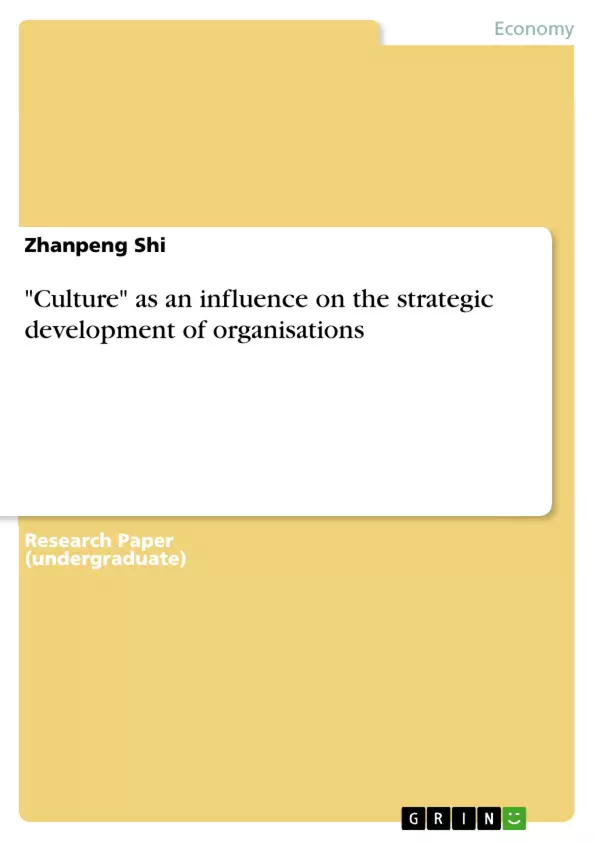In today’s world, there are many companies, each of which has its own unique corporate culture. Different corporate cultures constitute different companies. Some companies think that they should focus on the company’s main business, and some companies think that it should be diversified in order to achieve greater development. In fact, any decision of the company will affect the company's future development. This article will prove through some factual arguments that company culture is vital to the company's development.
Inhaltsverzeichnis (Table of Contents)
- Introduction
- The Influence of Company Culture
- Company Culture and Future Development
- The Company's Image and Brand
- Corporate Social Responsibility and Culture
- Impact of Culture on Strategy
- Ashridge College Model
- Corporate Culture and Consumer Perception
- Building a Positive Image
- The Importance of Corporate Social Responsibility
- Culture as a Catalyst for Growth
- Motivation and Strategic Objectives
- Hofstede's Cultural Dimensions
- Conclusion
Zielsetzung und Themenschwerpunkte (Objectives and Key Themes)
This article critically examines the significance of company culture in shaping the strategic development of organizations. It aims to demonstrate the vital role culture plays in influencing organizational decisions, employee motivation, and ultimately, the success of a company. By exploring real-world examples and theoretical frameworks, the article provides a comprehensive analysis of the complex relationship between culture and strategic development.
- The impact of company culture on future development
- The role of culture in shaping the company's image and brand perception
- The interconnectedness of corporate social responsibility and company culture
- The influence of culture on strategic decision-making and employee motivation
- The relationship between culture and corporate strategy development
Zusammenfassung der Kapitel (Chapter Summaries)
The introduction establishes the relevance of company culture in today's business landscape, highlighting the diverse perspectives on its influence. The text emphasizes the importance of culture in representing the company's image and its potential impact on partnerships and future development. The chapter explores how different companies, such as Huawei, Airbus, and Disney, leverage their unique cultures for growth and market dominance. It then delves into the Ashridge College model, which connects corporate culture and strategy through four key aspects: the purpose of culture, its values, the impact of strategy on business logic, and the influence of behavior on business operations.
Further, the article discusses the impact of corporate culture on consumer perception and the importance of building a positive image through corporate social responsibility. The chapter explores the challenges and opportunities associated with creating a strong social image, particularly for new companies with limited resources. It examines the "culture-free" approach adopted by NetEase, highlighting the company's focus on employee performance and their subsequent adoption of a defined culture.
The text concludes with a discussion of how corporate culture fosters employee motivation and contributes to the setting of strategic objectives. It emphasizes the importance of establishing a strong culture to achieve ambitious goals and propel rapid development. The author draws on Hofstede's research, which highlights the role of culture in influencing individualistic and collectivist tendencies and its potential to foster unity within a company.
Schlüsselwörter (Keywords)
This article explores the concept of company culture and its influence on strategic business analysis. Key themes include corporate culture, organizational development, strategic decision-making, employee motivation, corporate image, corporate social responsibility, consumer perception, and Hofstede's cultural dimensions.
- Quote paper
- Zhanpeng Shi (Author), 2020, "Culture" as an influence on the strategic development of organisations, Munich, GRIN Verlag, https://www.grin.com/document/1004834



